This short presentation was part of a panel about “Deep Fake and Rendering the Truth” at Ars Electronica. It interrogates the complexities of the realistic fake in the tradition of myth-making and explores the role of the digital poet.
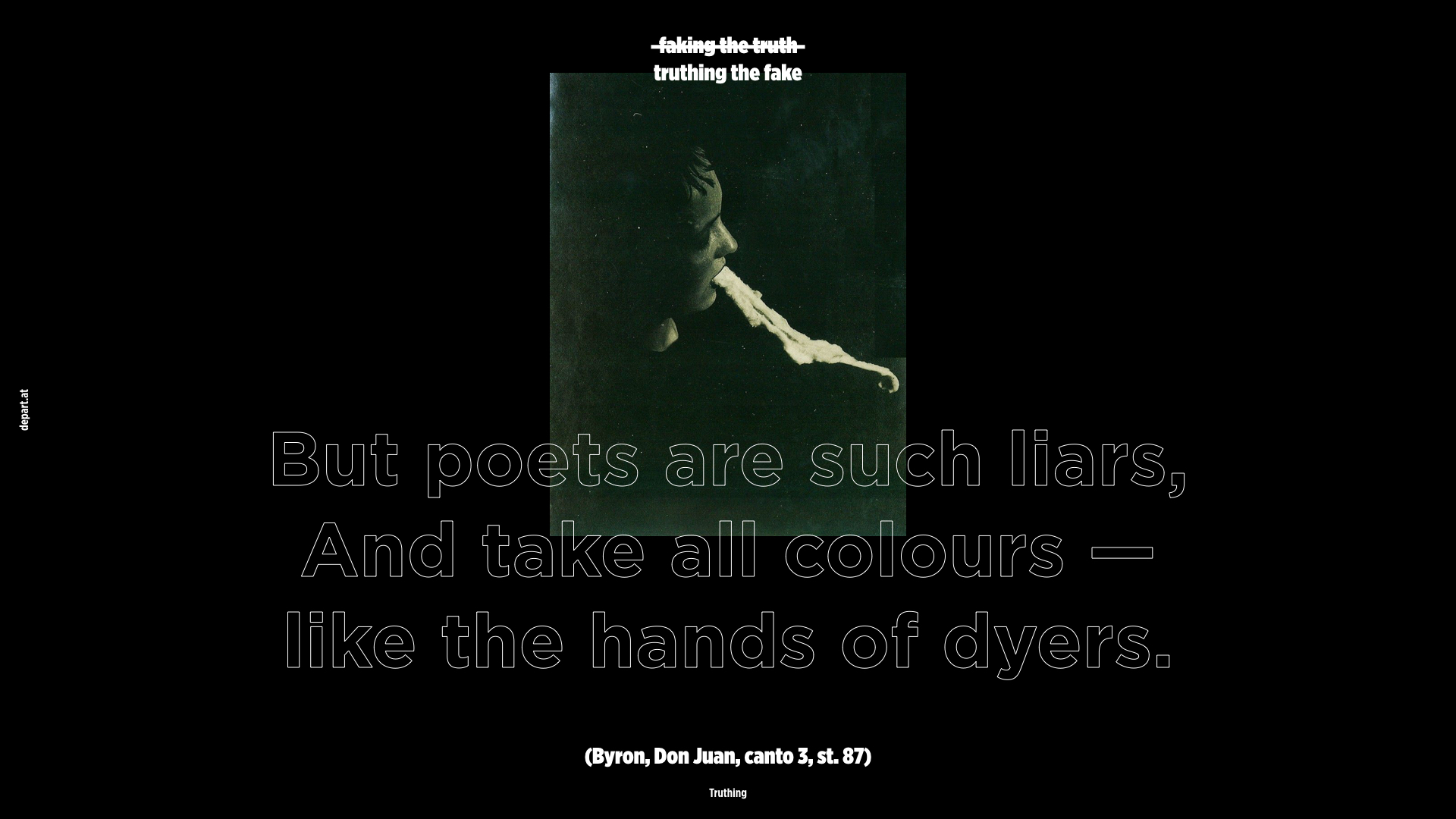
[Poets] are such liars,
And take all colours, like the hands of dyers.
Lord Byron, Don Juan, canto 3
As an artist-poet I clearly fall into the category of untruths, I both work within and represent a doubtful medium. This raises the unavoidable question:
Can we afford to be ambiguous in a time in which facts become an increasingly slippery commodity? What is the role of the contemporary poet?
The image I used to illustrate the poet is (as you’ve surely discovered) part of the genre of spiritual photography which was popular in the beginning of the 20th century. It shows a medium emitting ectoplasm during a seance in the process of connecting an unreality (the realm of the dead) to reality.
Of course the entire image is a fake. Presented to us as scientific proof, our trained eyes (and enlightened spirit) immediately reveal the cheap stage-effect. This was of course not apparent for the original audience which trusted in the novel medium. In that sense it talks about media literacy and a deliberate mislabelling, which are still two major problems today.
Epochè - An Analogy of itself
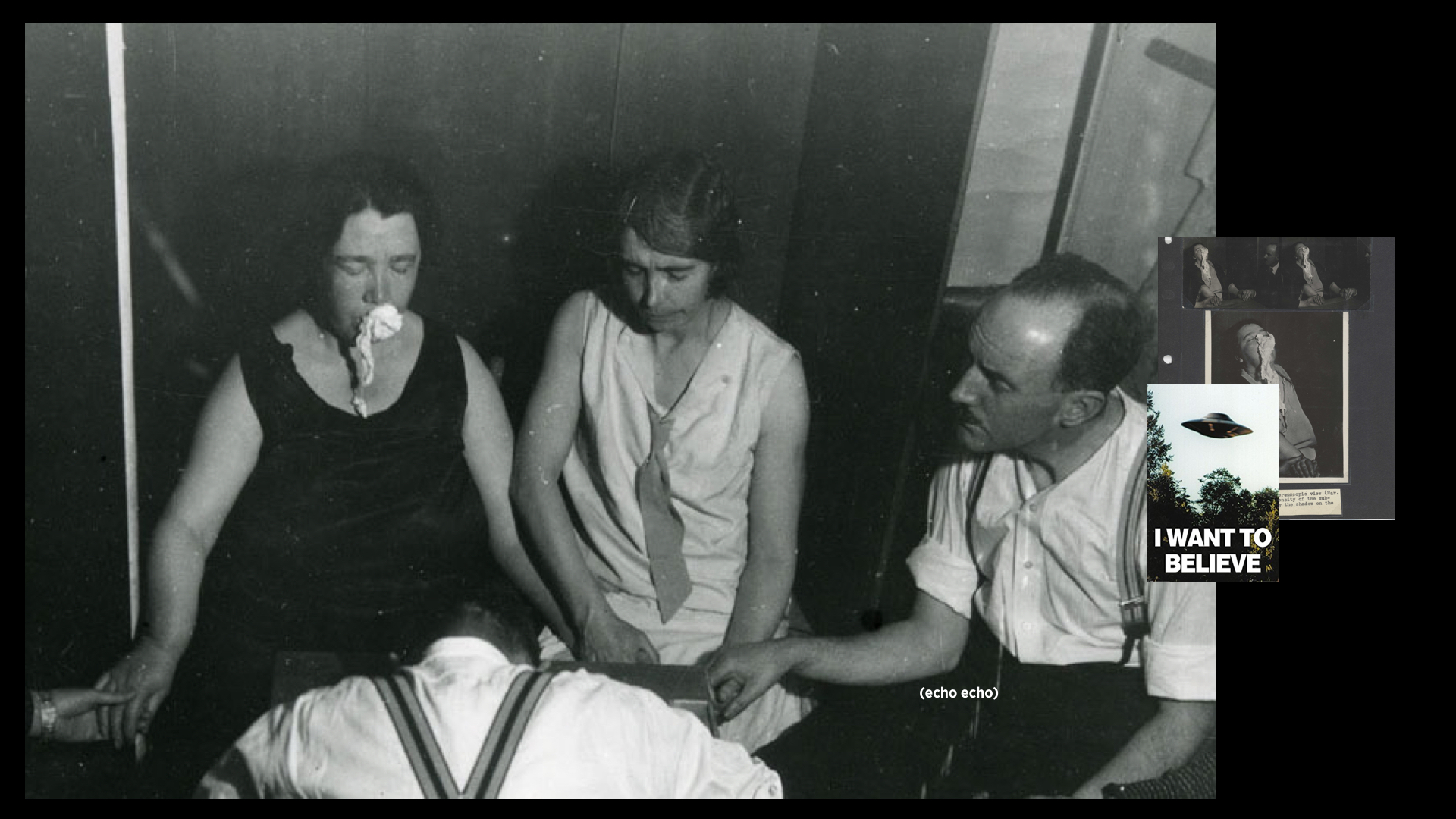
Mary Marshall (the woman in the picture) is essentially a medium delivering fake news to an audience united by the desire to believe in the transmitted messages! The way the medium operates is by feeling her audience out so that she may adjust her messages accordingly (as in collecting user data, individual targeting and echo chamber). Most importantly it also reveals the fake as a deeply cultural artefact in that it is a manifestation of desire. In this particular case it relates the core narrative of our contemporary technology which is the desire to connect to the un-there, to the beyond and to become telepresent ourselves.
Glitch
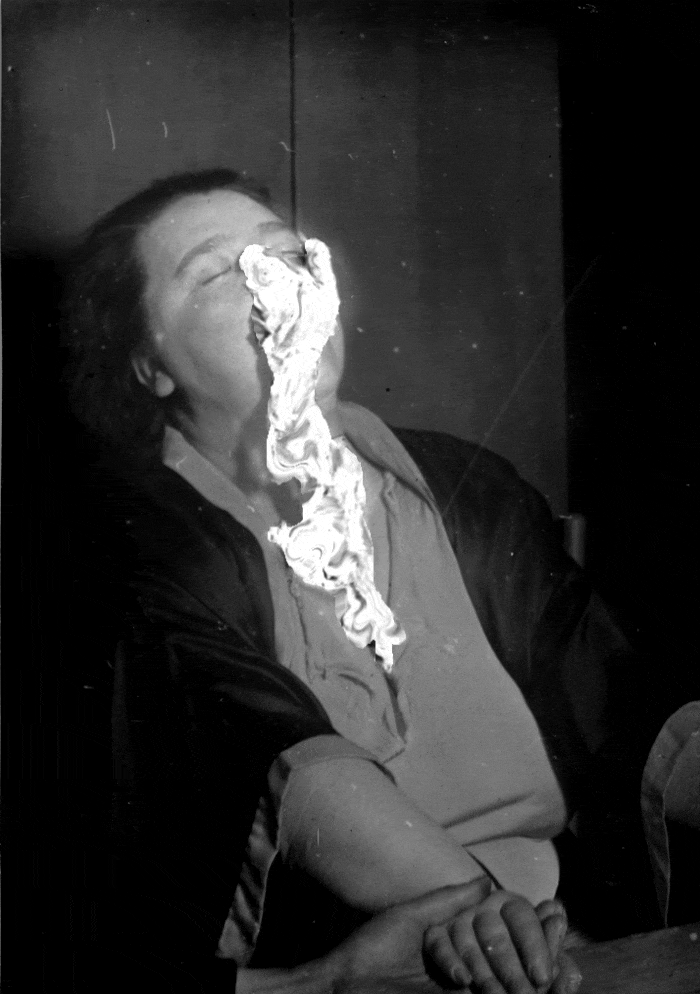
But what makes this whole image so intriguing is the presence of the ectoplasm which is essentially a manifestation of a glitch. In the process of the truthing of a fake this artifact is released as a by-product – a spill over.
This marks a field of artistic inquiry: exploration of the fringes, augmentation of glitches, reification of transient processes, etc. It might be situated in between the extremes of fetish and data visualisation.
We witness an esoteric action - and esoteric by definition means “intended for or likely to be understood by only a small number of people with a specialized knowledge or interest.” The whole setup is kept deliberately opaque. The widow has no insight at how the process of contacting her dead husband actually is implemented through the medium. We know nothing about her inner motives. Her state of trance is the staging of neutrality.
In contemporary terms we have a leaking blackbox and a literacy problem.
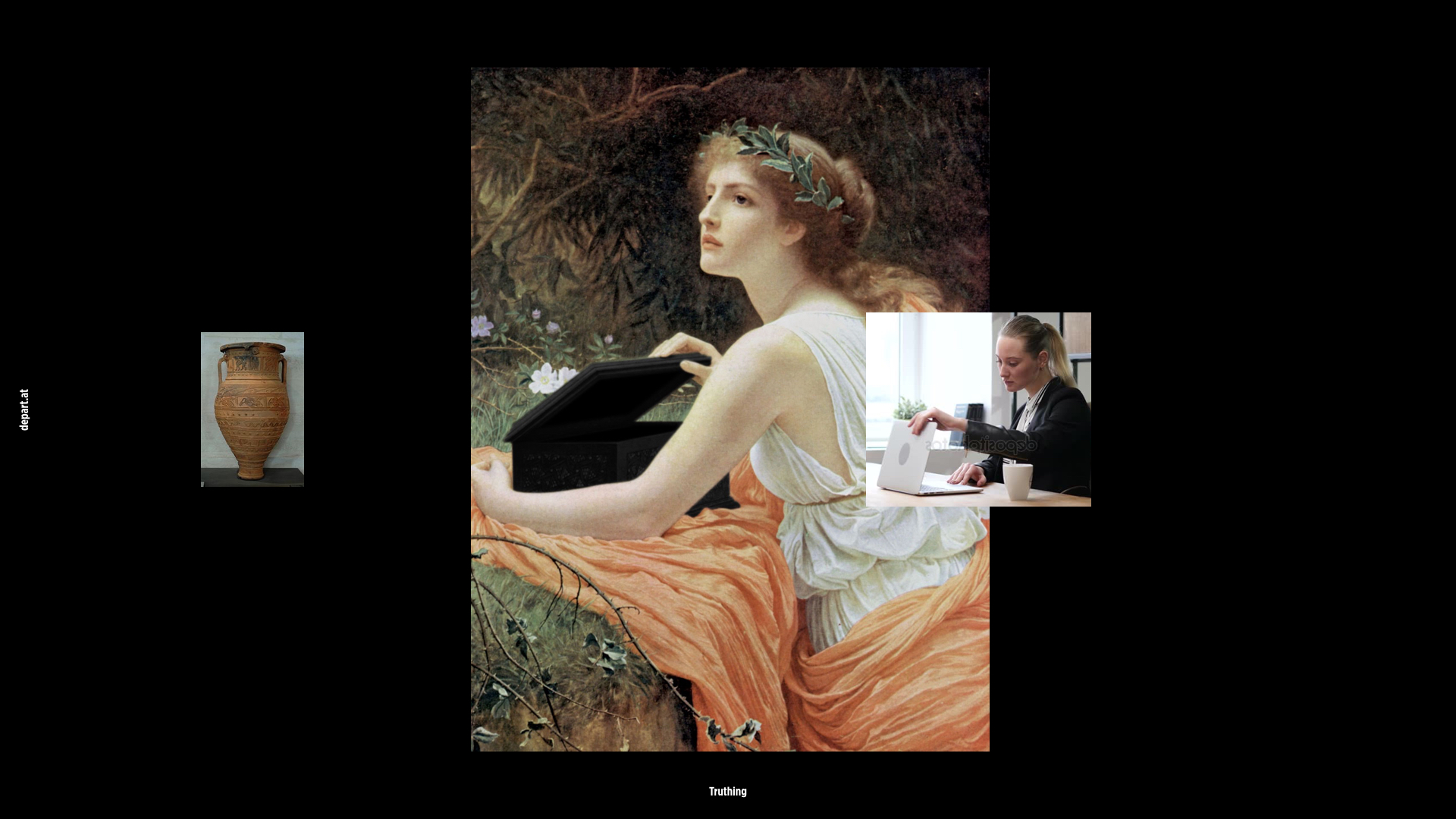
The more we diminish the mysteries of the natural with technology the less it is possible for a single person to fathom our machinery. By recursively stacking black boxes, technology has become esoteric by definition. So it is only “natural” that we start to build our myths/cults along technology and that the occult analogies work so well.
This image allows a second reading: Pandora never actually opened a box, she opened a jar (PITHOS). It was a slight mistranslation. But although we would know better now, we don't care to correct the mistake. It has been adopted by language and cultural artefacts and persists - it just fitted so well.
Unfaking the fake
With AI and deep fakes the availability of realistic image manipulation methods certainly reaches a new level in the erosion of trust in media. Therefore the central discussion evolves around counter-mechanisms of disproofing a fake. I argue that this is only a fraction of the underlying problem. While it is of course extremely important to challenge the factfulness of media with all force we also need to acknowledge the fake in the realm of fiction. There are plenty of examples that most of the damage is done at the very moment of the release of the fake. It immediately manipulates emotions, sparks imaginations, triggers actions, produces artifacts and and contaminates discourse and language. Even if we are able to disprove it eventually all these secondary effects will remain - reality has already shifted. It depends on the literary act of suspension of disbelief in a narrative that suits us. In the creation of beliveable utopias/dystopias it has already achieved its goal and becomes irreversible - you cannot unfake a fake. Therefore it becomes essential, that we challenge it in this realm as well and produce counter-narratives and counter-myths.
Daring the paradoxon
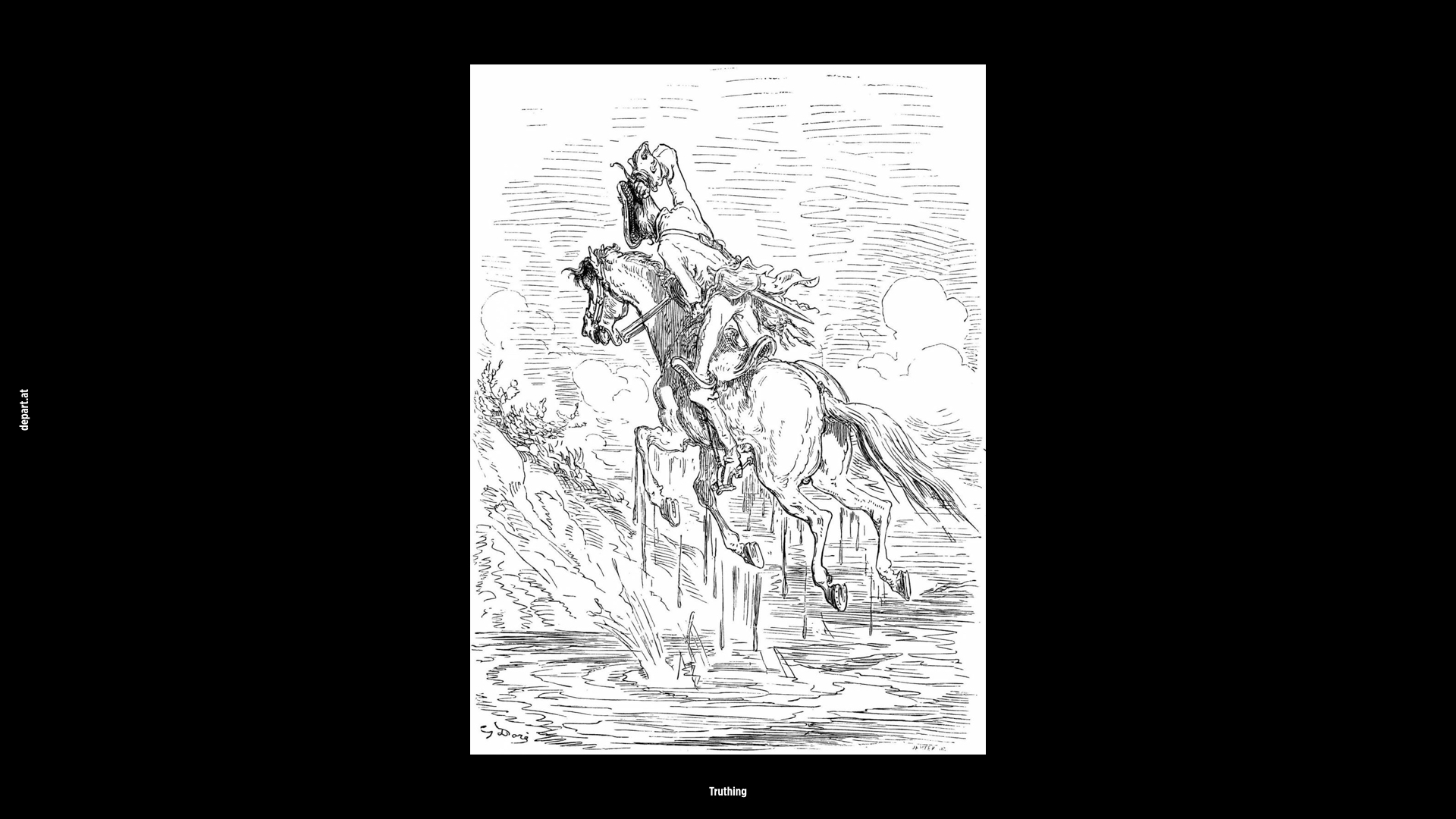
I want to close with the Baron of lies himself. The image shows Baron Münchhausen in the process of pulling himself and his horse out of a swamp in a heroic act of recursion.
So if we assert that everything simple is false maybe ambiguity is a valid response (as it doesn’t contain the brutality of a simplified truth)
Maybe in a time of ever increasing specialisation artists need to pose as the ultimate generalist.
Maybe, like the Baron, we need to dare the impossible.
Maybe the only way to deal with it is to do it ourselves – to tell elaborate lies to reveal a deeper truth.
1: Albert von Schrenck-Notzing, the medium Stanisława Popielska, 1920
2: T.G. Hamilton, the medium Mary Marshall, 1929
2: "I want to believe" Mulder office poster used in X Files seasons 4-1, based on a phototgraph by Billy Meier
3: Wendy Sawatzky based on TG Hamilton / Mary
4: Pandora's Box, unknown artist
5: Illustrations of Baron von Münchhausen by Gustave Doré, 1862